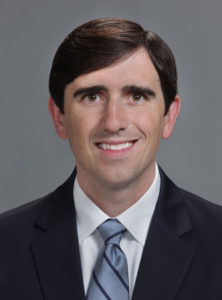FAI Surgeon

Are you an athlete who participates in sports activities requiring repetitive motion of the hip? If so, you may be at risk of Femoroacetabular impingement, otherwise known as FAI. FAI is a condition marked by abnormal contact between the hip bones causing impingement and pain. Hip surgeon and FAI treatment specialist, Dr. Robert Boykin provides diagnosis and both surgical and nonsurgical treatment options for patients in Asheville who are experiencing symptoms and pain caused by FAI. Contact Dr. Boykin’s team today!
What is Femoroacetabular Impingement (FAI)?
Over the past decade an understanding of Femoroacetabular Impingement (FAI) has increased exponentially. FAI refers to a condition where there is a bony abnormality of the hip. This abnormality can affect the femoral side of the hip (ball), the acetabular side (socket), or both.
When involving the femoral side, this condition is termed Cam impingement and is the result of an abnormally shaped femoral head being forced into the socket. Since the head is not round, as it should be, this causes damage to the articular cartilage and the labrum through a “cam” type mechanism with an effect similar to the cam devices used in manufacturing and engines.
When the pathology involves the acetabular side it is called Pincer impingement and refers to an acetabulum that is too deep, extends beyond the normal boundaries, or is mal-rotated. This creates a situation of over coverage and causes the labrum to be trapped between the femoral head and neck with motion of the hip. Over time the labrum will tear and the underlying articular cartilage will be damaged. The majority of patients with FAI are thought to have a mixed type, with components of both Cam and Pincer impingement. The cause of the condition remains unknown, but it is likely a combination of factors including genetic, developmental, and overuse. Dr. Boykin specializes in the treatment of FAI for patients in the Asheville, Arden, Fletcher and surrounding communities.
How to Treat FAI?
Initial treatment measures for FAI are non-operative including rest, activity modification, and physical therapy to strengthen the core musculature and muscles around the hip. Injections into the hip may also be used for diagnostic and therapeutic purposes. If a patient continues to have ongoing hip pain, then surgery is usually recommended to correct the bony conflict and address any labral or cartilage pathology. If surgery is indicated, Dr. Boykin will most likely use an arthroscopic surgical approach using two small incisions. A camera is introduced into the hip to visualize the damage while the other incision is used to insert specialized instruments to perform the procedure. One of the following two procedures will be performed depending on what type of impingement is presented:
- Femoroplasty: A femoroplasty is performed in the setting of Cam impingement which consists of using small instruments to remove the bony abnormality (Cam lesion) on the femur and reshape the femoral head and neck junction into a normal sphere.
- Acetabuloplasty: An acetabuloplasty entails taking away the area of over coverage on the acetabular side to relieve the bony impingement and create space allowing normal motion of the hip.
Cases of mixed type impingement may require both a femoroplasty and an acetabuloplasty, which can be performed during the same surgery. In addition, damage to the labrum and cartilage is also addressed arthroscopically during the operation. Patients may either go home the same day or spend one night in the hospital depending on the specific procedure required.
Recovery from FAI Surgery
Rehabilitation includes a focused program with a physical therapist starting immediately after surgery. This includes working on regaining motion of the hip while protecting any repairs. Patients are typically on crutches for 3 – 8 weeks depending of what type of procedure was necessary and are also placed in a brace to protect their hip during healing. The results from femoroplasty and acetabuloplasty (with labral repair if needed) have been very promising with a majority of the patients being satisfied with the procedure, having improvements in pain, and returning to their activities.
For more information on FAI, or for additional resources on treatments including an arthroscopic femoroplasty or acetabuloplasty, please contact the office of Dr. Robert Boykin, orthopedic hip surgeon serving Asheville, Arden, Fletcher and surrounding North Carolina communities.
